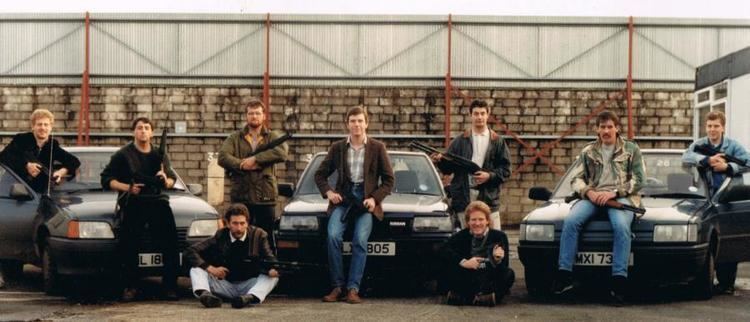 | ||
Similar Provisional Irish Republic, MI5, Official Irish Republican Army, Real Irish Republican Army, Irish National Liberatio | ||
The Force Research Unit or Field Reconnaissance Unit (FRU) was a covert military intelligence unit of the British Army that was active during the Troubles in Northern Ireland. It was established in the early 1980s and was a successor to similar units such as the Military Reaction Force and Special Reconnaissance Unit. Like its predecessors, the FRU was found to have colluded with British loyalist paramilitaries in the murder of civilians. The FRU was part of the British Army's Intelligence Corps. From 1987 to 1991, it was commanded by Gordon Kerr.
Contents
- Collusion with loyalist paramilitaries
- Alleged infiltration of republican paramilitary groups
- FRU and the Stevens Inquiry
- References
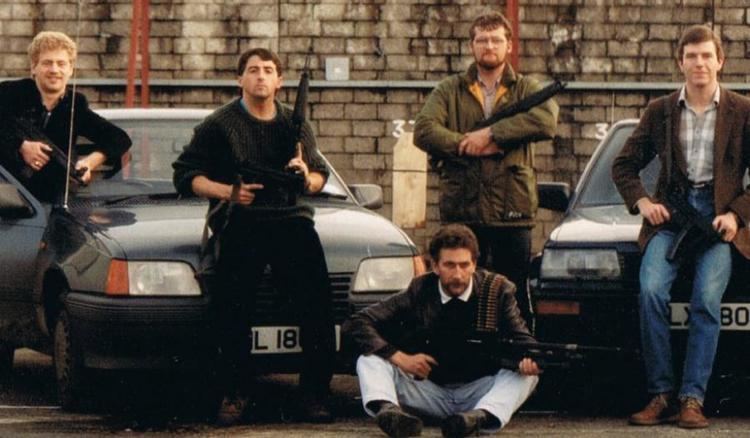
The FRU recruited double agents from paramilitary groups. Its existence was revealed in the 1990s by the Stevens Inquiries. The inquiries found that the FRU had agents from loyalist paramilitaries murder civilians. This has been confirmed by some former members of the unit.
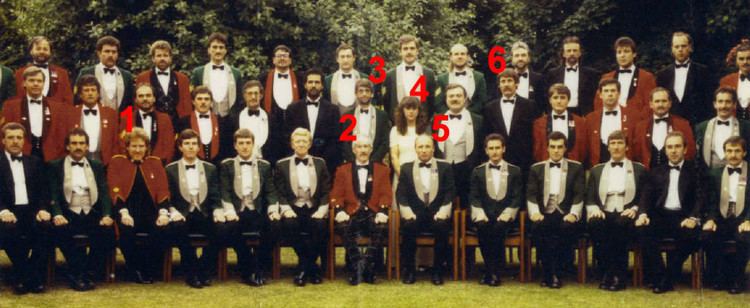
Collusion with loyalist paramilitaries
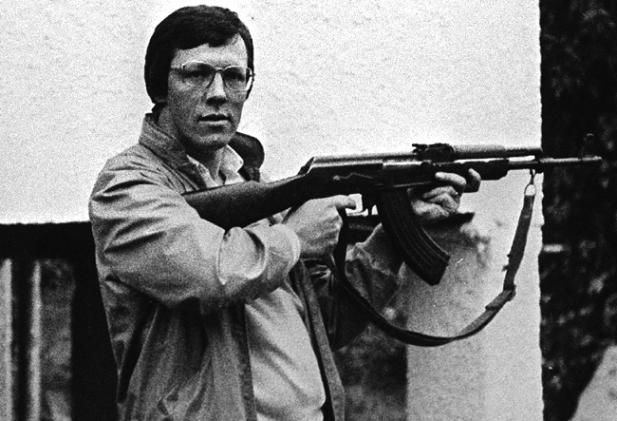
In the mid 1980s, the FRU recruited Brian Nelson as a double agent inside the Ulster Defence Association (UDA). The UDA was a legal Ulster loyalist paramilitary group that had been involved in hundreds of attacks on Catholic and nationalist civilians, as well as a handful on republican paramilitaries. The FRU helped Nelson become the UDA's chief intelligence officer. In 1988, weapons were shipped to loyalists from South Africa under Nelson's supervision. Through Nelson, the FRU helped the UDA to target people for assassination. FRU commanders say their plan was to make the UDA "more professional" by helping it to kill republican activists and prevent it from killing uninvolved Catholic civilians. They say if someone was under threat, agents like Nelson were to inform the FRU, who were then to alert the police. Gordon Kerr, who ran the FRU from 1987 to 1991, claimed Nelson and the FRU saved over 200 lives in this way. However, the Stevens Inquiries found evidence that only two lives were saved and said many loyalist attacks could have been prevented but were allowed to go ahead. The Stevens team believes that Nelson was responsible for at least 30 murders and many other attacks, and that many of the victims were uninvolved civilians. One of the most prominent victims was solicitor Pat Finucane. Although Nelson was imprisoned in 1992, FRU intelligence continued to help the UDA and other loyalist groups. From 1992 to 1994, loyalists were responsible for more deaths than republicans for the first time since the 1960s.
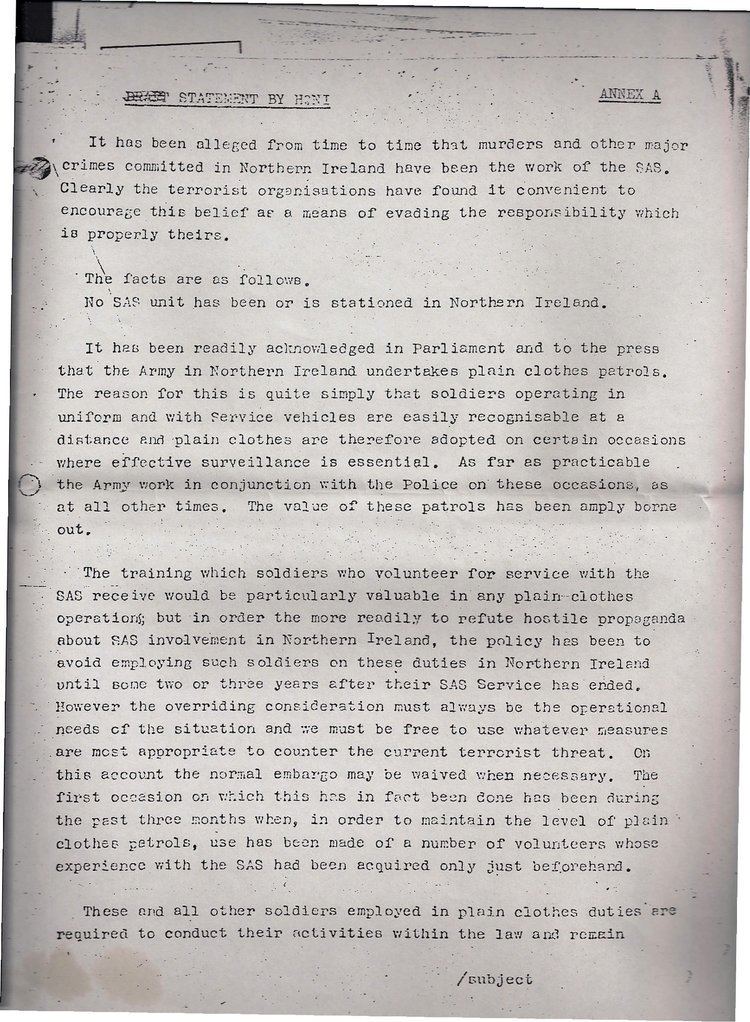
Allegations exist that the FRU sought restriction orders in advance of a number of loyalist paramilitary attacks in order to facilitate easy access to and escape from their target. A restriction order is a de-confliction agreement to restrict patrolling or surveillance in an area over a specified period. This de-confliction activity was carried out at a weekly Tasking and Co-ordination Group which included representatives of the Royal Ulster Constabulary, MI5 and the British Army. It is claimed the FRU asked for restriction orders to be placed on areas where they knew loyalist paramilitaries were going to attack.
Alleged infiltration of republican paramilitary groups
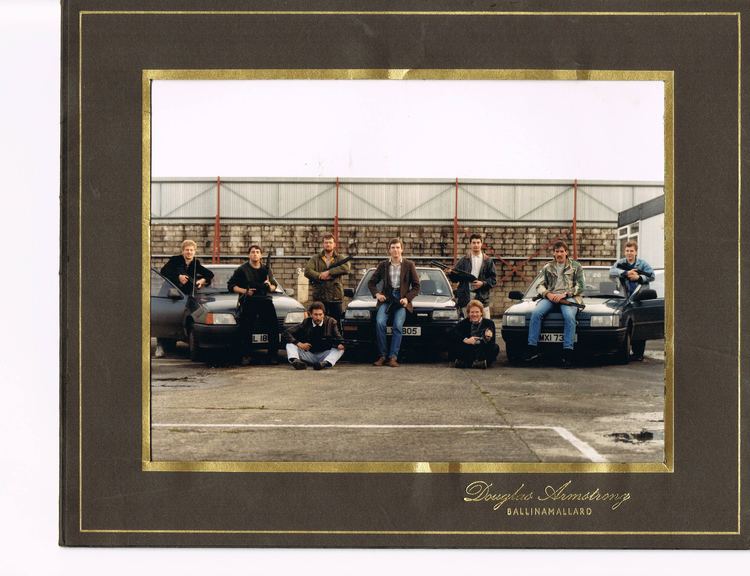
FRU are also alleged to have handled agents within republican paramilitary groups. A number of agents are suspected to have been handled by the FRU including IRA units who planted bombs and assassinated. Attacks are said to have taken place involving FRU-controlled agents highly placed within the IRA. The main agent to have been uncovered so far was codenamed "Stakeknife". There is a debate as to whether this agent is IRA member Freddie Scappaticci or another, as yet unidentified, IRA member.
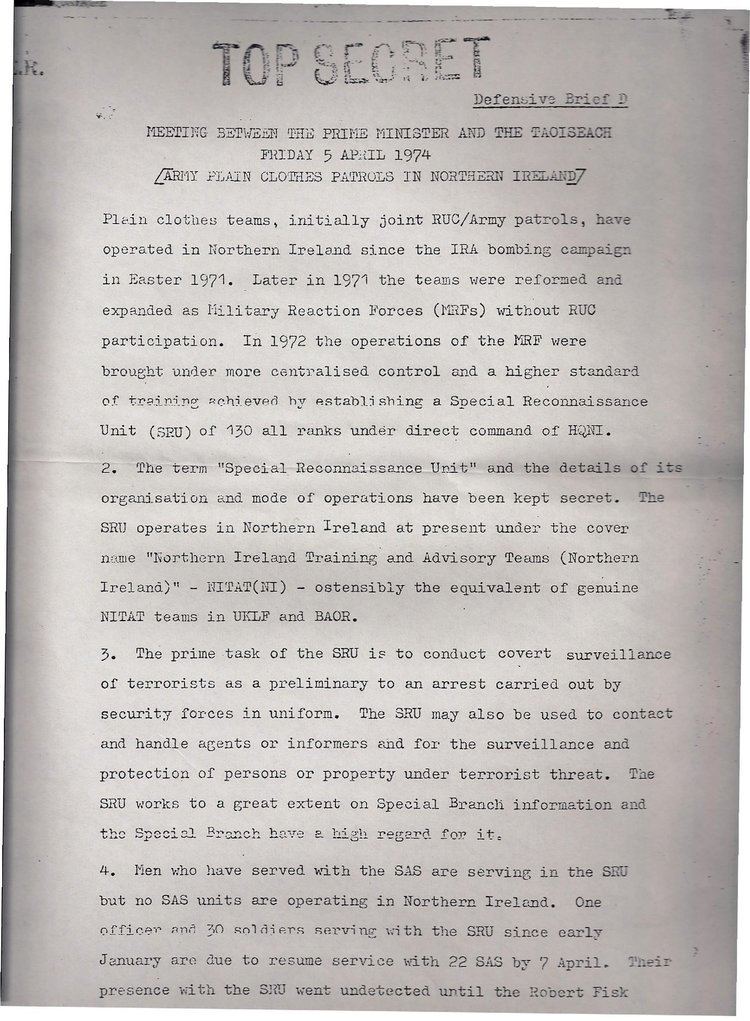
"Stakeknife" is thought to have been a member of the IRA's Internal Security Unit - a unit responsible for counter-intelligence, interrogation and court martial of informers within the IRA. It is believed that "Stakeknife" was used by the FRU to influence the outcome of investigations conducted by the IRA's Internal Security Unit into the activities of IRA volunteers.
It is alleged that in 1997 the UDA came into possession of details relating to the identity of the FRU-controlled IRA volunteer codenamed "Stakeknife". It is further alleged that the UDA, unaware of this IRA volunteer's value to the FRU, planned to assassinate him. It is alleged that after the FRU discovered "Stakeknife" was in danger from UDA assassination they used Brian Nelson to persuade the UDA to assassinate Francisco Notarantonio instead, a Belfast pensioner who had been interned as an Irish republican in the 1940s. The killing of Notarantonio was claimed by the UFF at the time. Following the killing of Notarantonio, unaware of the involvement of the FRU, the IRA assassinated two UDA leaders in reprisal attacks. It has been alleged that the FRU secretly passed details of the two UDA leaders to the IRA via "Stakeknife" in an effort to distract attention from "Stakeknife" as a possible informer.
FRU and the Stevens Inquiry
Former FRU operative Martin Ingram asserted that the arson attack which destroyed the offices of the Stevens Inquiry was carried out by the FRU to destroy evidence on operational activities collected by Stevens' team.
